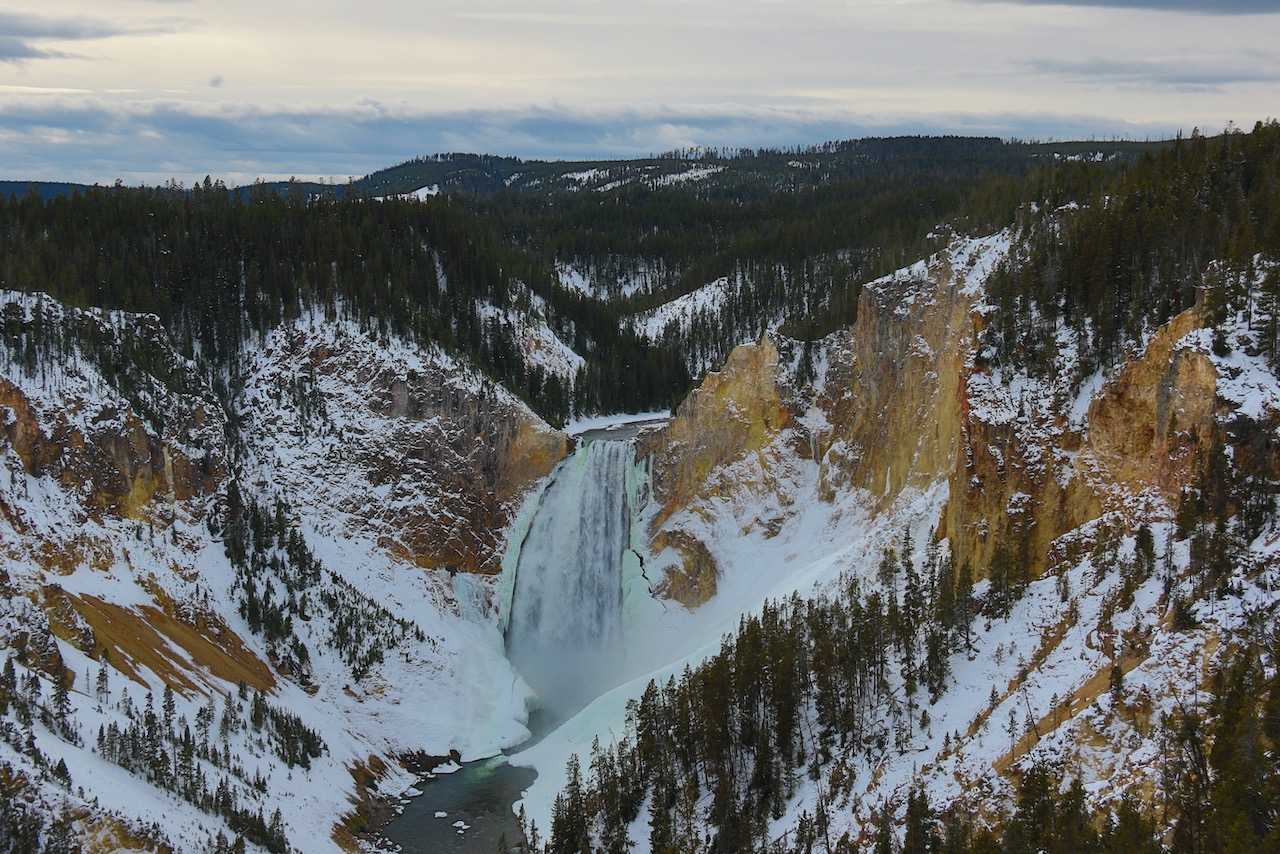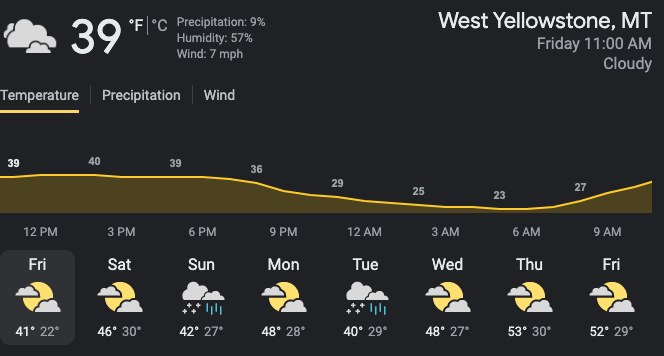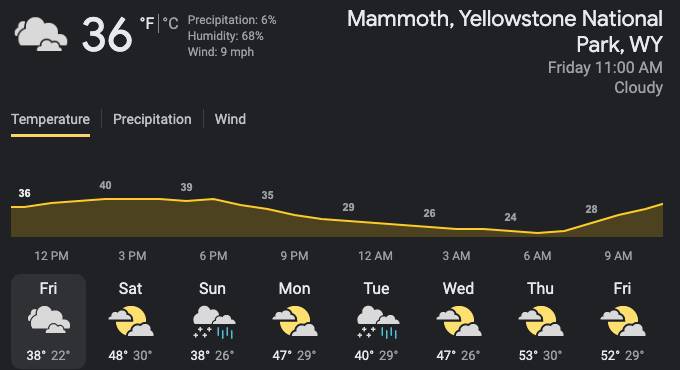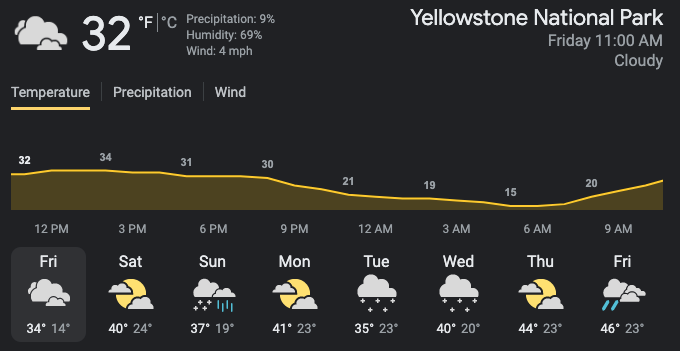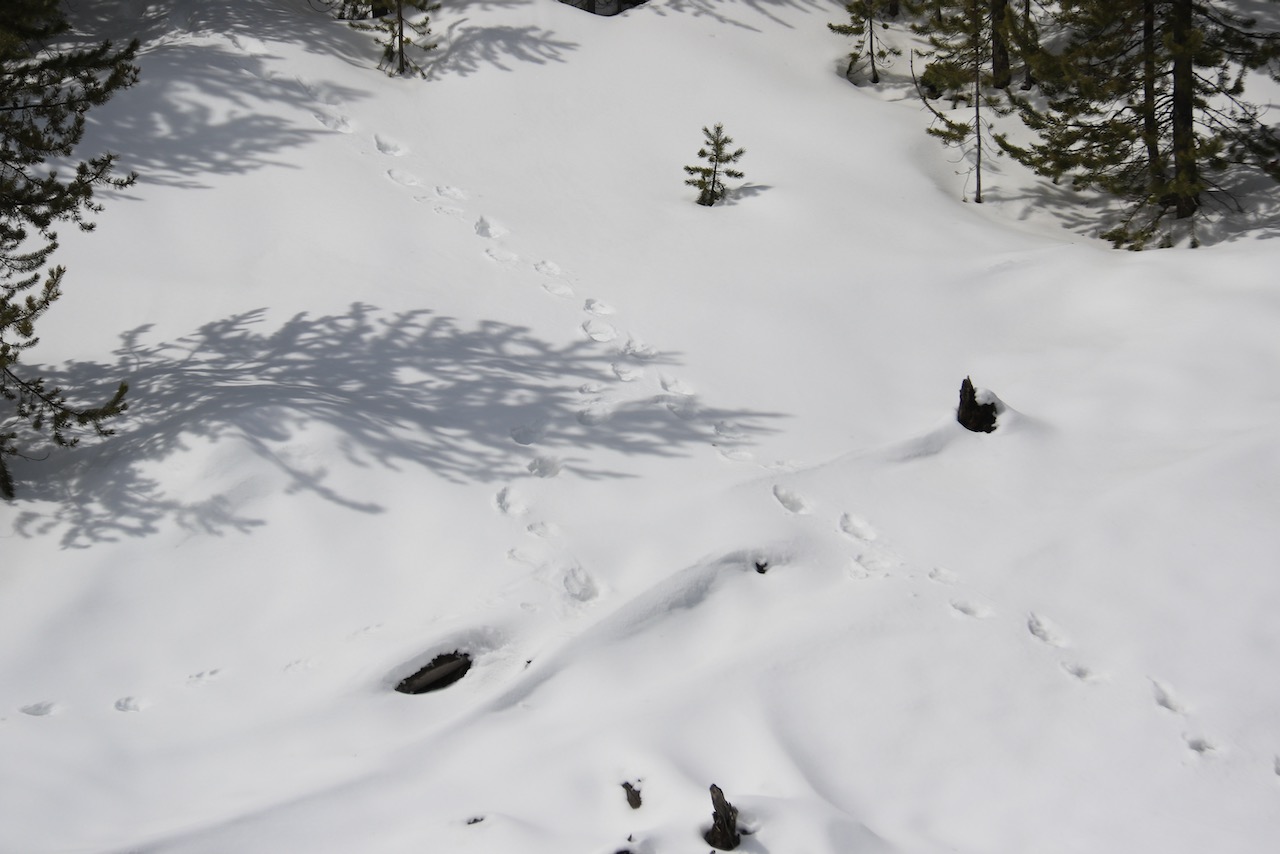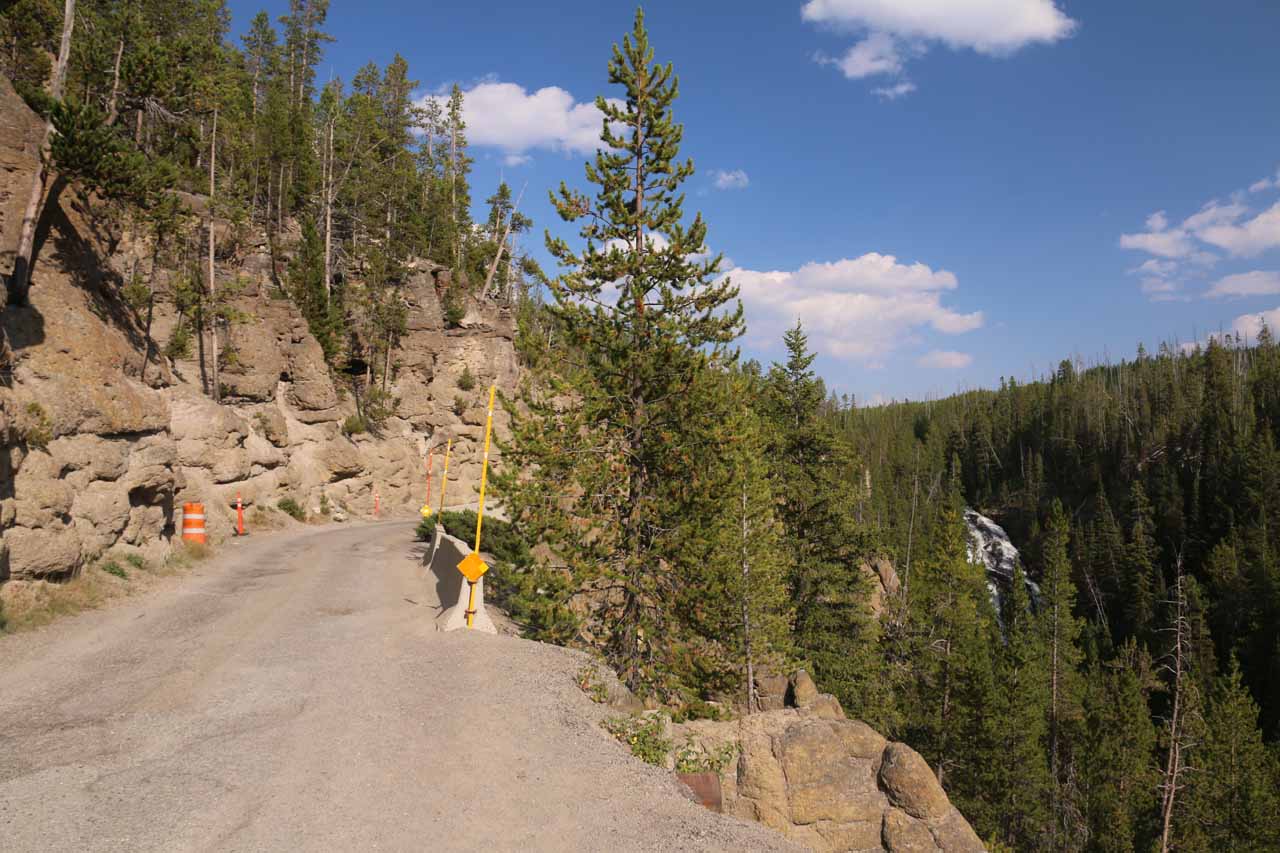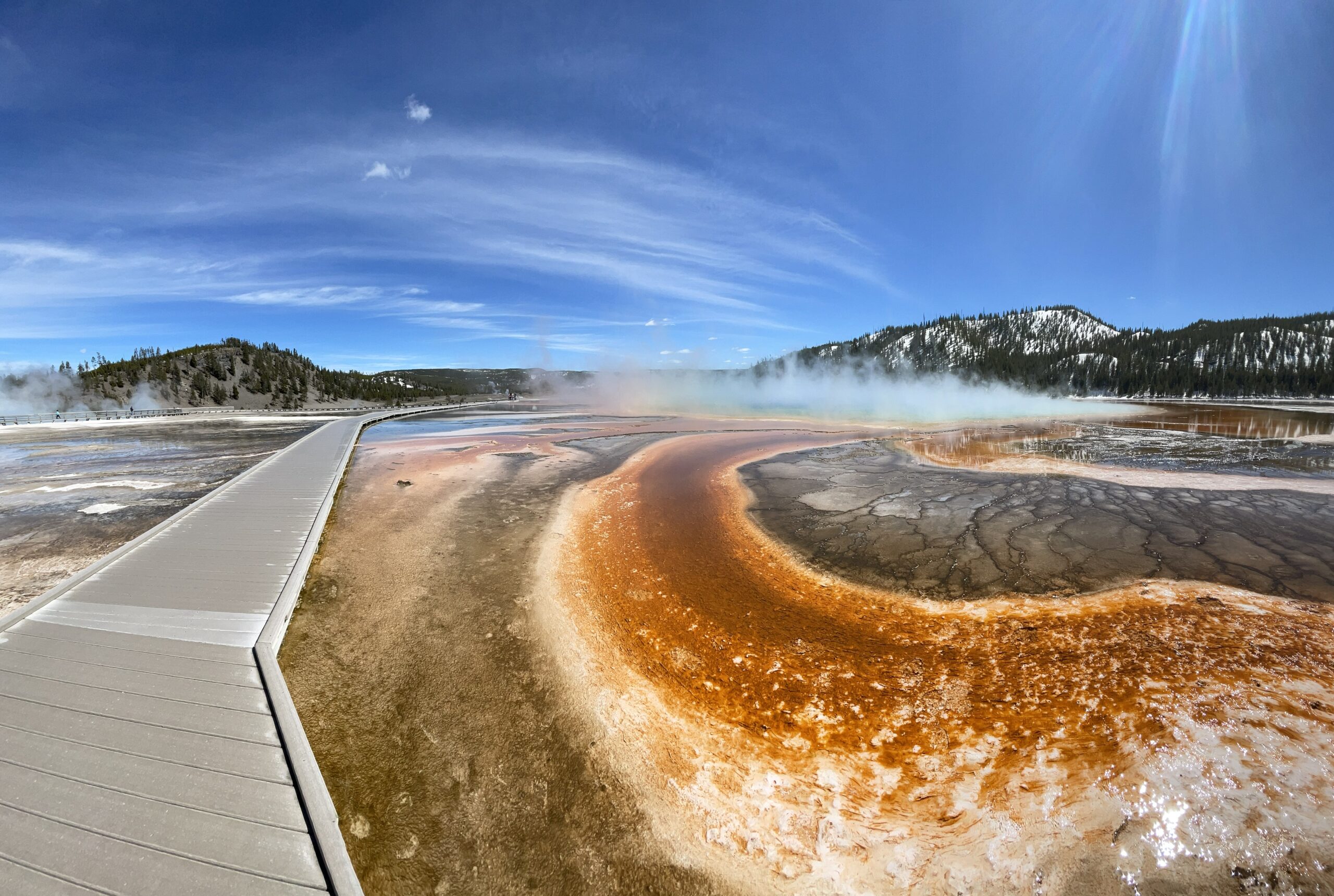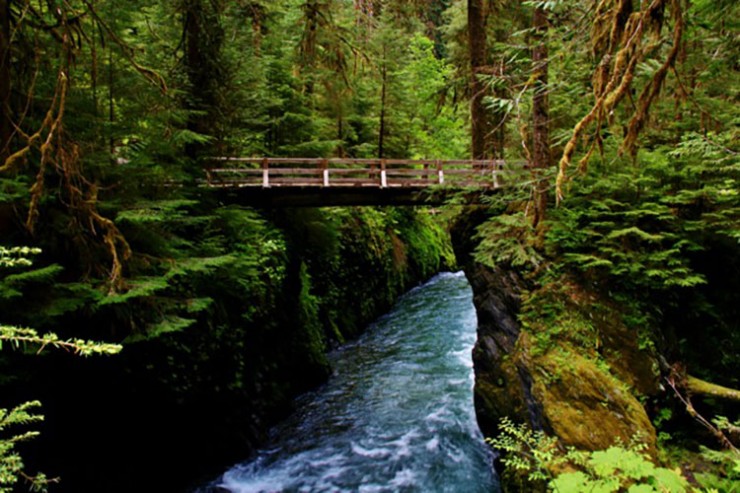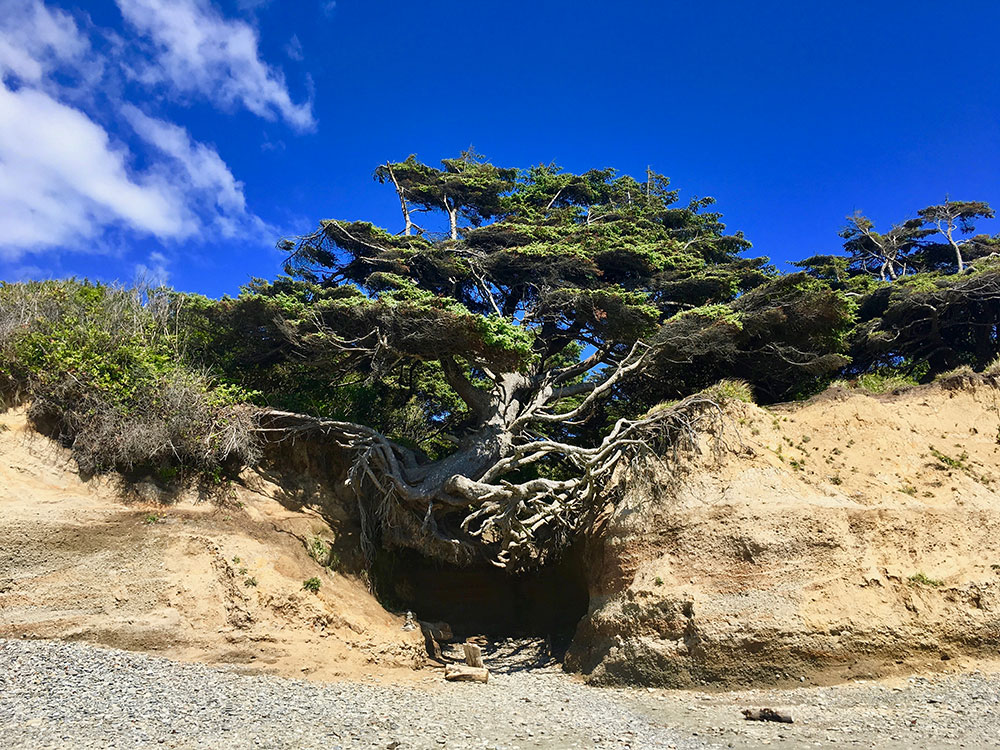This Week in Yellowstone, I celebrate an increased snowpack, highlight another road to hike before it opens to cars, and even give hiking tips for the mud and snow season we are currently in. The wolves have been putting on a show in the northern range and bear sightings have increased, so if you are heading to the park, expect a busy week with rain, snow and sun.
If you enjoy this or know someone who will, please share this and get ready to visit America’s first National Park. If you want to support my weekly park posts, please pick up a guidebook!
BIGGEST NEWS OF THE WEEK
Yellowstone Research Library is Hosting a Sesquicentennial Summer Reading Challenge!
Want to become a Yellowstone expert by the end of the summer? The Yellowstone Research Library is hosting a Sesquicentennial Summer Reading Challenge! To celebrate the establishment of Yellowstone in 1872, read 1,872 minutes, which is about 30 hours, between April 15 – August 31.
Those interested can head over to the Yellowstone webpage and download the Yellowstone National Park recommended reading list and tracker sheet. You will more than likely have to work with your local library or inter-library loan to find Yellowstone-specific books, but the list is truly awesome and one I will be using as sources for decades to come.
Once you decide to do the reading challenge, Yellowstone asks that you update your progress both on your tracker sheet and on social media using the hashtag #YellowstoneReads. Once you completed your reading challenge, share your success and a few of your favorite books to keep the conversation going!
HIKING NEWS AND UPDATES
If you are coming to the park in hopes to hike to the tops of mountains or somewhere far from the boardwalks, I wish you the best of luck. Right now, the trails are sloppy at best, be it mud that clings to your shoes until your legs weight double, or in snow that will have you sinking to your knees or hips. You may also find slush that even soaks Goretex laden feet. Hiking right now can be a bit frustrating. That doesn’t mean not to try it, but if you are not accustomed to less than ideal conditions, I would reconsider audacious hiking plans.
While you probably won’t be able to hike that trail you have always dreamed of this week, you can still put in some miles and see incredible sights. If you hike all the boardwalks in the geyser basin, you’ll easily have over six miles of hiking in a day. If you throw in the boardwalks at Mammoth and Norris, as well as the scenic spots along the Grand Canyon of the Yellowstone, you’ll end up with around ten miles for the day. These trails all lead to some of the most significant and scenic spots in the park and I can’t recommend them enough. Especially now, when traffic in the park is still minimal.
I’ll be updating trail conditions each week, so stay tuned for when the mud season has ended and when summits and remote trails are more easily accessible.
SNOWPACK UPDATE
It is not easy being green, as Kermit the Frog once crooned, and the snowpack in Montana can relate. On snowpack maps, the color green represents 90-109% of normal snowpack and for nearly the entire fall, winter and spring months, the snowpack has failed to come close to being green. That all changed over the last two weeks. The snowpack is still below average for this time of the year, but not nearly as dire as a month ago. As of time of publication, the snowpack in the greater Yellowstone region has climbed to 90% or higher in most areas. The Gallatin Range to the west of the park is still struggling, though, coming in at just 81% of normal. Overall, the snowpack has dramatically improved and the common g precipitation for the week is definitely welcome. While rain and snow may be an inconvenience for your plans, know that every drop of rain or snowflake could make the difference between a beautiful summer or a desperately depressing fire season.
Here is the current snowpack map: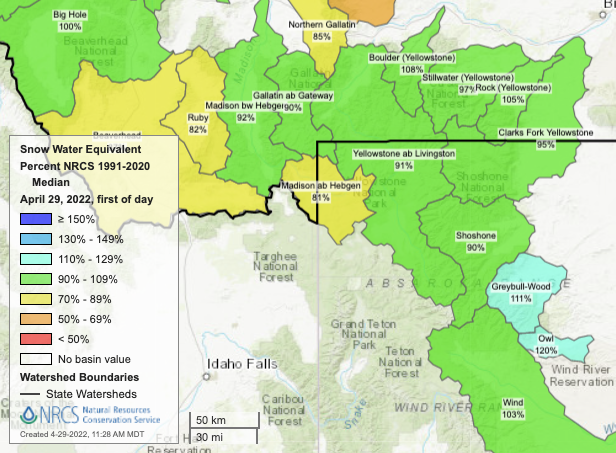
WEATHER FOR THE COMING WEEK
Looks like we get a repeat of last week! That means snow, rain, clouds and sun.
West Yellowstone will see rain on Saturday night and rain or snow on Sunday. Snow and sun will be around Monday and Tuesday, with around three inches possible. Clearing and mountain warmth return Wednesday through Friday. Gardiner and Mammoth Hot Springs will be similar, but a little warmer, with most of the precipitation falling as rain. Cooke City will see snow on Saturday night and Sunday, then a decent day on Monday before three inches of snow is scheduled for Wednesday. Warmth and sun returns after that.
This is the weather.com forecast for West Yellowstone, Gardiner, Norris, Mammoth Hot Springs and Cooke City. While these locations don’t specifically cover the entire Yellowstone region, the forecasts give a great idea of what to expect all around the region. As always, weather can and does change fast in the park, so always be prepared for anything, even snow in the summer.
ROADS AND CAMPGROUNDS
The roads this week will be fine, for the most park. I expect a few problem areas, specifically from Pebble Creek to Cooke City and from Norris to Canyon, as these areas get more snow and rough weather. Crews will be out making sure the roads are as best as they can be, but definitely be aware that conditions on Sunday, Tuesday and Wednesday could be sloppy in places. Overall, I wouldn’t be too worried. Just drive slow and turn around if it gets too overwhelming.
For up-to-date information call (307) 344-2117 for recorded information, or sign up to receive Yellowstone road alerts on your mobile phone by texting “82190” to 888-777 (an automatic text reply will confirm receipt and provide instructions). Anticipate possible road closures due to inclement weather and dangerous driving conditions.
Planning on camping in the park this week?
Mammoth is still the only campground open in the park and has started to see an increase in activity. You should still be able to get a site without a reservation, but the weeks of this happening are running out.
WILDLIFE WATCH
The Northern Range has been the wildlife watching hot spot this past week. Wolves have been feasting on elk and bison, an occasional grizzly sighting has occurred and eagles, osprey and all sorts of other birds are hanging out near the waterways. Bison and elk, as well as pronghorn and deer have also been seen along the stretch from Mammoth to Pebble Creek, so if you want consists wildlife sightings, I would head to this area. I almost forgot to mention that more newborn bison have been spotted in this area too!
Elsewhere in the park, the snow is limiting animal sightings. You’ll still see bison and elk, probably a coyote or two and maybe even a lazy grizzly foraging or napping near the road, but sightings have been anything but consistent. That doesn’t mean it will be the same this coming week, but conditions in the interior are still less than ideal for fantastic and dependable wildlife encounters.
Want to know the park like a local wildlife expert? I wrote a guidebook with the best tips and best locations for wildlife sightings on your Yellowstone trip. Pick up your digital ebook or paperback copy now! Ebooks are just $5.
HIGHLIGHT OF THE WEEK
Walk the Virginia Cascade Road
Last week I suggested you walk the Firehole Canyon Drive, so it isn’t hard to guess that this week I would be sharing Virginia Cascade Drive as a fun walk. The road is seasonally open spur road between Norris and Canyon and is one that is scenic, serene and perfect for those looking for a walk in a lesser traveled area this week. At 2.5 miles in length, five miles round trip, you’ll have winding waterways, stunning cascades and potential animal sightings. You’ll also have a picnic area that overlooks a gorgeous meadow. While you can hike this road either way, I suggest starting and ending on the eastern end of the road. I consider this the most scenic way and won’t make you hike all the way to the other end to see all the highlights.
Roughly a mile and a half from the starting point on the east side, you’ll reach Virginia Cascade, which is a 60 foot cascade of the Gibbon River. Besides the awesome rocks and scenery, this route is full of history. In the late 1800s, this was the original drive along the Grand Loop Road that stagecoaches and smaller vehicles would use to travel between Norris and Canyon.Just remember that you will encounter some snow as you walk this road for the week of April 29th through May 5th, so be prepared.
TIP OF THE WEEK
Expect Everything to Take Longer to Do and See
It can be tempting to be in a hurry to see the wonders of Yellowstone. Excitement gets to be too much and soon, the 35 mph and 45 mph speed limits signs of the park may start to feel slow. You may have a check-in at a nearby hotel, or be in a rush to get to someplace to meet friends or family. You may have any number of reasons to feel that being in a hurry is justified. But the fastest you are legally allowed to drive in the park is 45mph. Many sections are 35 or 25 mph and for good reason. Blind corners, busy trailheads, congested parking areas, wildlife on the road- all of these things will impact your travel time and derail your detailed or scheduled itinerary.
I know it can be stressful to be late or behind, but it is important to remember that you are in Yellowstone. You are in nature. You are in one of the most spectacular places on the planet and the area does not care about your schedule. To best counter act this before the stress of being off track gets to you, I strongly suggest doubling the time you expect to drive between locations, as well as time you expect to spend at an area. Otherwise, you’ll get rushed, miss something amazing, or be in a bad mood. Why do that on your vacation to this amazing place? Take your time and relax, soaking up everything as best you can.
WANT TO KNOW MORE?
Curious about something not mentioned in the post?
Send me an email or message on social media and let me know how I can help.

